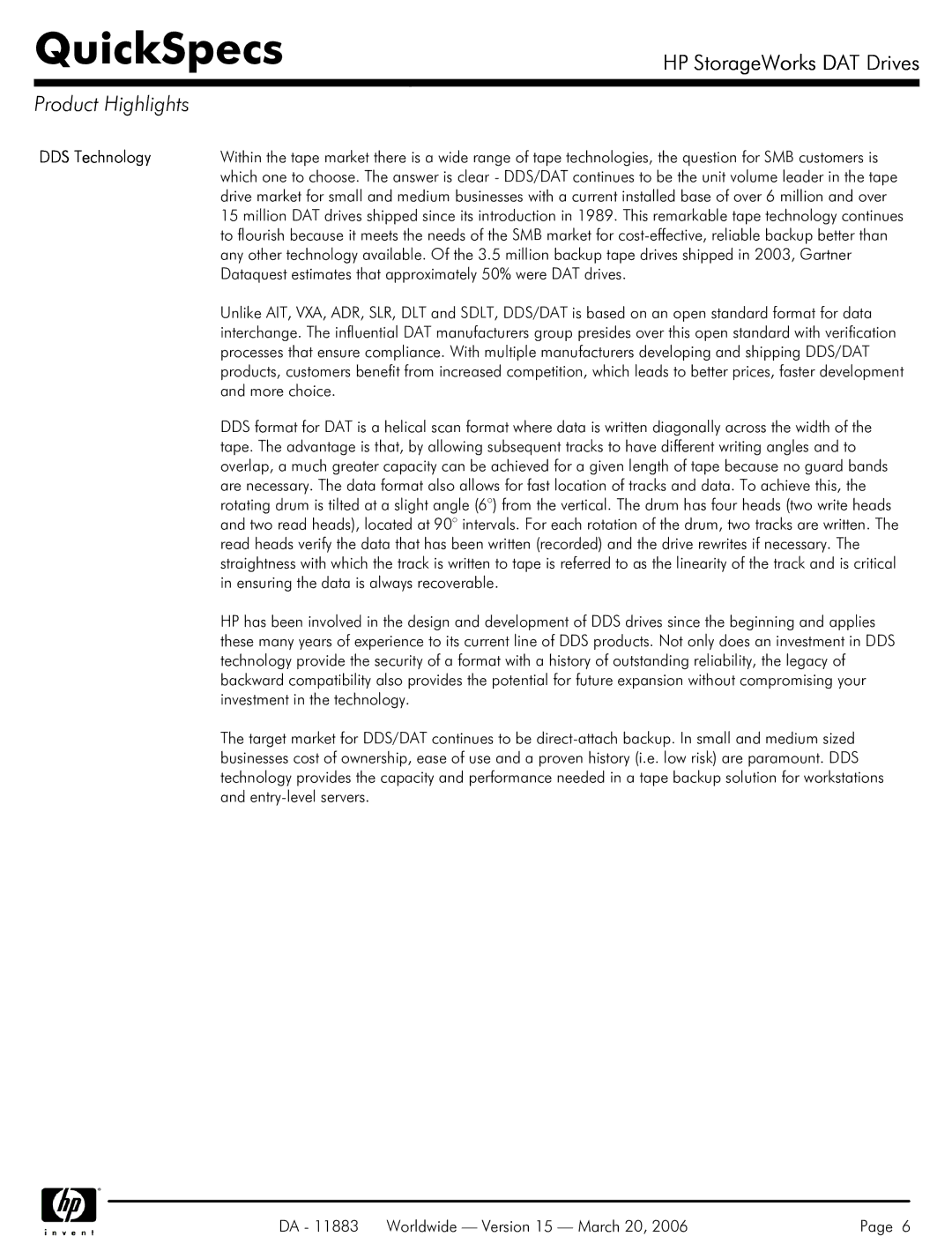
QuickSpecs
HP StorageWorks DAT Drives
Product Highlights
DDS Technology | Within the tape market there is a wide range of tape technologies, the question for SMB customers is |
| which one to choose. The answer is clear - DDS/DAT continues to be the unit volume leader in the tape |
| drive market for small and medium businesses with a current installed base of over 6 million and over |
| 15 million DAT drives shipped since its introduction in 1989. This remarkable tape technology continues |
| to flourish because it meets the needs of the SMB market for |
| any other technology available. Of the 3.5 million backup tape drives shipped in 2003, Gartner |
| Dataquest estimates that approximately 50% were DAT drives. |
| Unlike AIT, VXA, ADR, SLR, DLT and SDLT, DDS/DAT is based on an open standard format for data |
| interchange. The influential DAT manufacturers group presides over this open standard with verification |
| processes that ensure compliance. With multiple manufacturers developing and shipping DDS/DAT |
| products, customers benefit from increased competition, which leads to better prices, faster development |
| and more choice. |
| DDS format for DAT is a helical scan format where data is written diagonally across the width of the |
| tape. The advantage is that, by allowing subsequent tracks to have different writing angles and to |
| overlap, a much greater capacity can be achieved for a given length of tape because no guard bands |
| are necessary. The data format also allows for fast location of tracks and data. To achieve this, the |
| rotating drum is tilted at a slight angle (6°) from the vertical. The drum has four heads (two write heads |
| and two read heads), located at 90° intervals. For each rotation of the drum, two tracks are written. The |
| read heads verify the data that has been written (recorded) and the drive rewrites if necessary. The |
| straightness with which the track is written to tape is referred to as the linearity of the track and is critical |
| in ensuring the data is always recoverable. |
| HP has been involved in the design and development of DDS drives since the beginning and applies |
| these many years of experience to its current line of DDS products. Not only does an investment in DDS |
| technology provide the security of a format with a history of outstanding reliability, the legacy of |
| backward compatibility also provides the potential for future expansion without compromising your |
| investment in the technology. |
| The target market for DDS/DAT continues to be |
| businesses cost of ownership, ease of use and a proven history (i.e. low risk) are paramount. DDS |
| technology provides the capacity and performance needed in a tape backup solution for workstations |
| and |
DA - 11883 Worldwide — Version 15 — March 20, 2006 | Page 6 |
